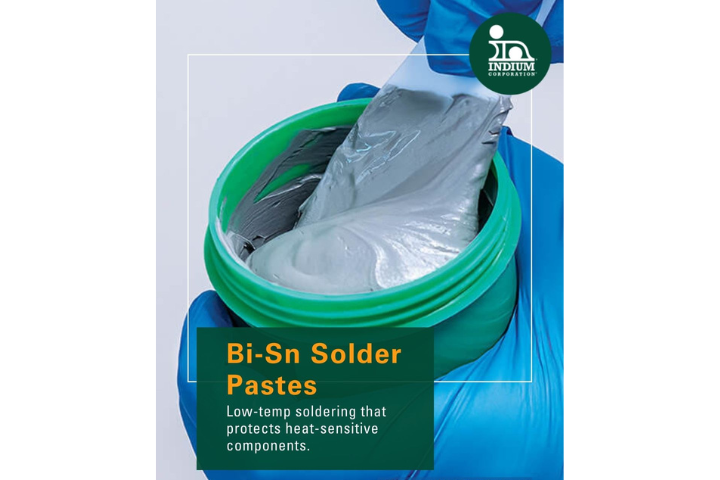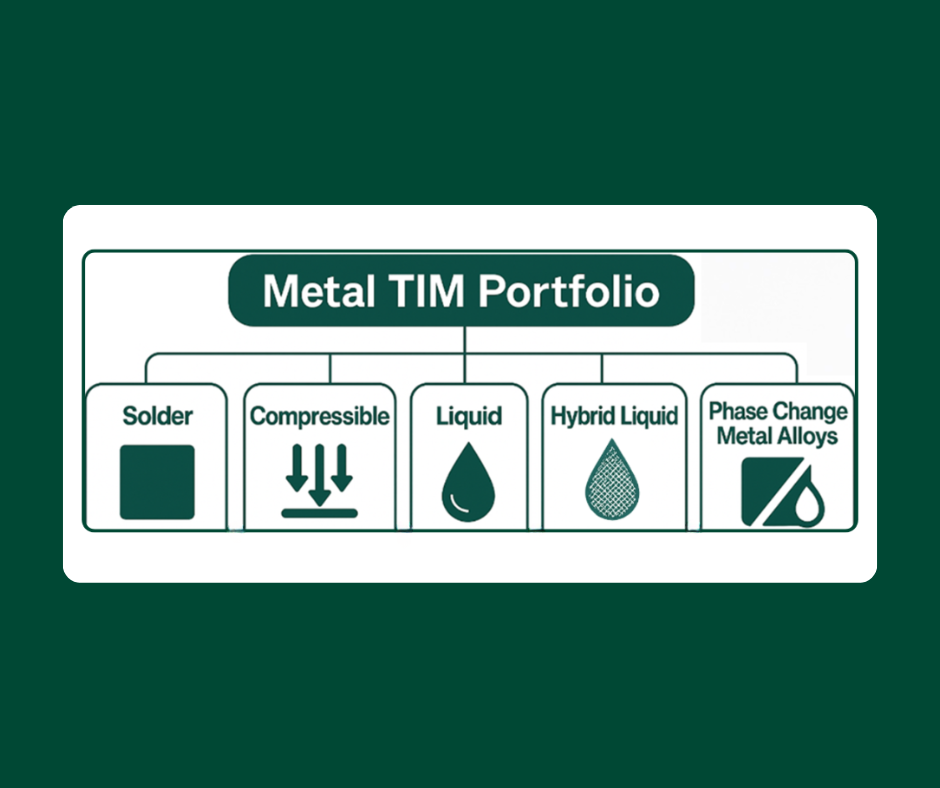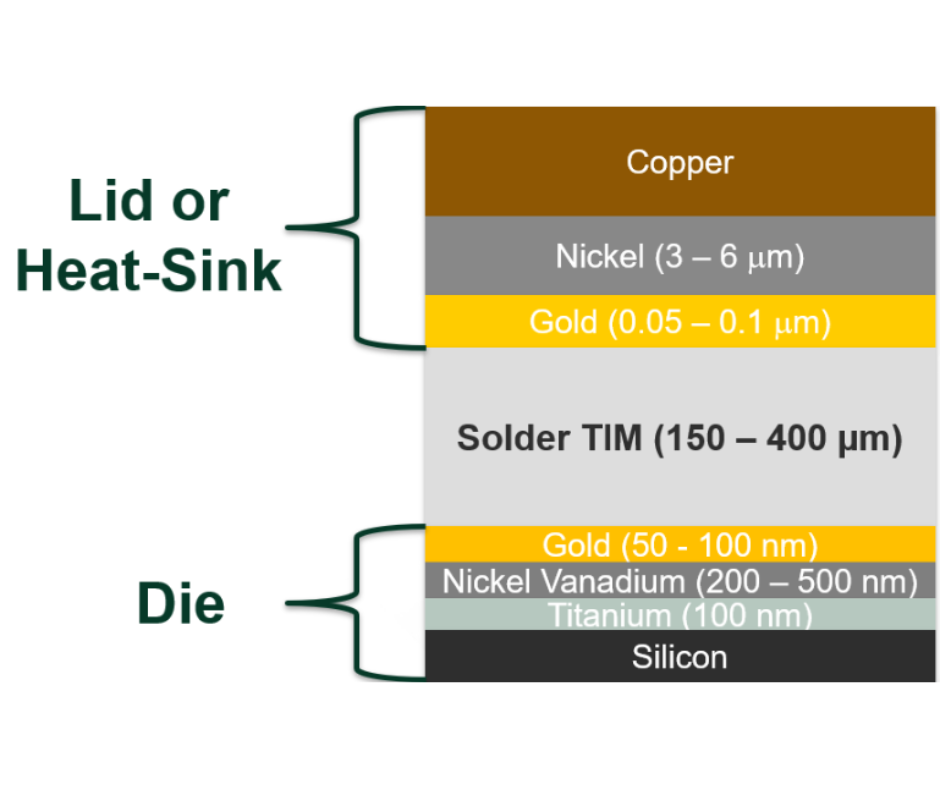In our previous guide, we introduced the world of low-temperature soldering and its growing importance in modern electronics assembly. Now, we will take a deeper dive into one of the key enabling materials: bismuth solder. As components shrink and thermal sensitivity increases, understanding the nuances of different solder alloys becomes critical.
This guide focuses on bismuth-containing solder, exploring its unique physical properties, the evolution of its use in SMT applications, and the factors you need to consider when selecting the right alloy. Why has bismuth become so prominent in low-temperature soldering? Let’s find out.
An Introduction to Bismuth Solders
Bismuth is a fascinating metal. It’s dense, brittle, and has a relatively low melting point compared to other metals. On its own, pure bismuth melts at 271°C, but when alloyed with tin (Sn), it creates a eutectic alloy with a much lower melting point. The most common formulation, B58Sn42, melts at just 138°C. This property makes it an ideal candidate for low-temperature solder paste.
Historically, bismuth was used in solders for specific, niche applications. However, with the push toward lead-free manufacturing and the need for lower processing temperatures, bismuth-containing alloys have moved into the mainstream. Their ability to form reliable joints well below the 240°C peak temperatures required for tin-silver-copper (SAC) alloys is a game-changer.
A key physical property to remember is its brittleness. A standard bismuth-tin solder joint is more rigid and less ductile than its SAC counterpart, which has implications for applications involving drop shock or high vibration. Sounds like a deal-breaker, right? Not necessarily. Advanced formulations have been developed to address this very issue, along with techniques such as edge bonding or underfill.
Low-Temperature Reflow: SAC vs. Bismuth Alloys
The primary advantage of using a low-temperature solder is the significant reduction in peak reflow temperature. While a typical SAC305 profile requires a peak temperature of around 240-245°C, a bismuth-tin alloy can be reflowed with a peak temperature of approximately 160°C. That’s a reduction of over 80°C.
This temperature difference is not just a number; it has profound effects on the entire assembly process. The benefits are clear and compelling:
Protecting Temperature-Sensitive Components
Many modern sensors, optical modules, and plastic-encapsulated components cannot withstand high reflow temperatures. Using a bismuth-containing solder prevents thermal damage, increasing yield and final product reliability.
Energy and Cost Savings
Lowering oven temperatures directly reduces energy consumption. Across thousands of manufacturing cycles, this translates into substantial cost savings and a smaller carbon footprint.
Reduced Component Warpage
Large packages like BGAs are susceptible to warping at high temperatures, which can cause defects like head-in-pillow (HiP), non-wet opens, and bridging. By reducing the peak reflow temperature, you can minimize warpage and improve solder joint integrity.
Compatibility with Temperature-Sensitive Substrates
Some flexible or alternative board materials cannot handle the heat of a standard reflow process. Low-temperature soldering opens the door to using a wider variety of substrate materials.
When implementing a low-temperature process, it’s crucial to follow the recommended reflow profile guidelines for your specific solder paste, as they will differ significantly from the profiles used for SAC alloys.
Exploring Bi-Based Low-Temperature Alloy Options
Not all bismuth solders are created equal. Over the years, alloy compositions have been refined to enhance performance and overcome some of the inherent challenges of bismuth, like its brittleness.
Let’s look at some common options:
- Indalloy®281 (58Bi/42Sn): This is the workhorse of bismuth alloys. It’s a eutectic alloy with a melting point of 138°C. It is widely used in applications where low temperature is the primary concern and mechanical shock resistance is not a critical factor.
- Indalloy®282 (57Bi/42Sn/1Ag): What a difference 1% makes. The addition of a small amount of silver (Ag) to the bismuth-tin alloy dramatically reduces its brittleness. While the melting point only increases by a single degree to 139°C, the resulting solder joint is more ductile and resilient. If you bend a wire made from BiSn, it will likely snap. A wire of BiSnAg, however, will bend, showcasing its improved mechanical properties.
- Next-Generation Bismuth Alloys: Ongoing research has led to even more advanced formulations. These next-generation alloys, such as Indalloy®303, are designed to offer superior thermal cycling performance, further improving the reliability of bismuth solder joints in demanding environments. This makes them suitable for applications that experience wide temperature swings, such as automotive electronics.
The choice of alloy depends entirely on your application’s requirements. Do you need maximum cost savings on a static device, or is improved drop shock and thermal reliability a priority? Check out our Solder Alloy Selector Guide or contact our team of Technical Support Engineers to find the proper alloy for your application.
The Critical Role of Flux
The alloy is only half of the equation. The flux vehicle in a low-temperature solder paste is specially designed to activate at lower temperatures, effectively cleaning the soldering surfaces and ensuring proper wetting. A flux designed for SAC alloys simply won’t work correctly in a low-temperature profile. For example, our Indium5.7LT-1 is a no-clean flux vehicle specifically formulated for bismuth-based alloys to provide excellent printability, long stencil life, and minimal voiding.
Navigating Supply Chain and Pricing
As with any commodity, the price and availability of bismuth can fluctuate based on global market dynamics. Recently, discussions around export restrictions and shifts in supply chains have brought the topic of material sourcing to the forefront.
Ensuring a secure and stable supply chain is more important than ever. Partnering with a supplier who has a reliable sourcing strategy is critical for mitigating risks associated with price volatility and geopolitical factors. This ensures you can maintain production continuity without unexpected disruptions. A reliable partner offers peace of mind, allowing you to focus on manufacturing instead of worrying about material availability.
Conclusion: Is Bismuth Solder Right for You?
Low-temperature soldering with bismuth-containing alloys offers a powerful solution to many of the challenges facing modern electronics manufacturing. By reducing thermal stress, protecting sensitive components, and lowering energy costs, it enables the creation of more complex and reliable devices.
While the inherent brittleness of standard Bi/Sn alloys is a valid concern, advanced formulations containing silver and other elements have made significant strides in improving mechanical performance. When selecting a solder, you must weigh the benefits of a lower reflow temperature against the specific mechanical and thermal demands of your product’s end-use environment.
Choosing the right alloy and flux combination is a critical decision. By understanding the properties of different bismuth solders and partnering with a knowledgeable materials supplier, you can successfully implement a low-temperature soldering process that enhances quality, reduces costs, and keeps you ahead of the technological curve.




